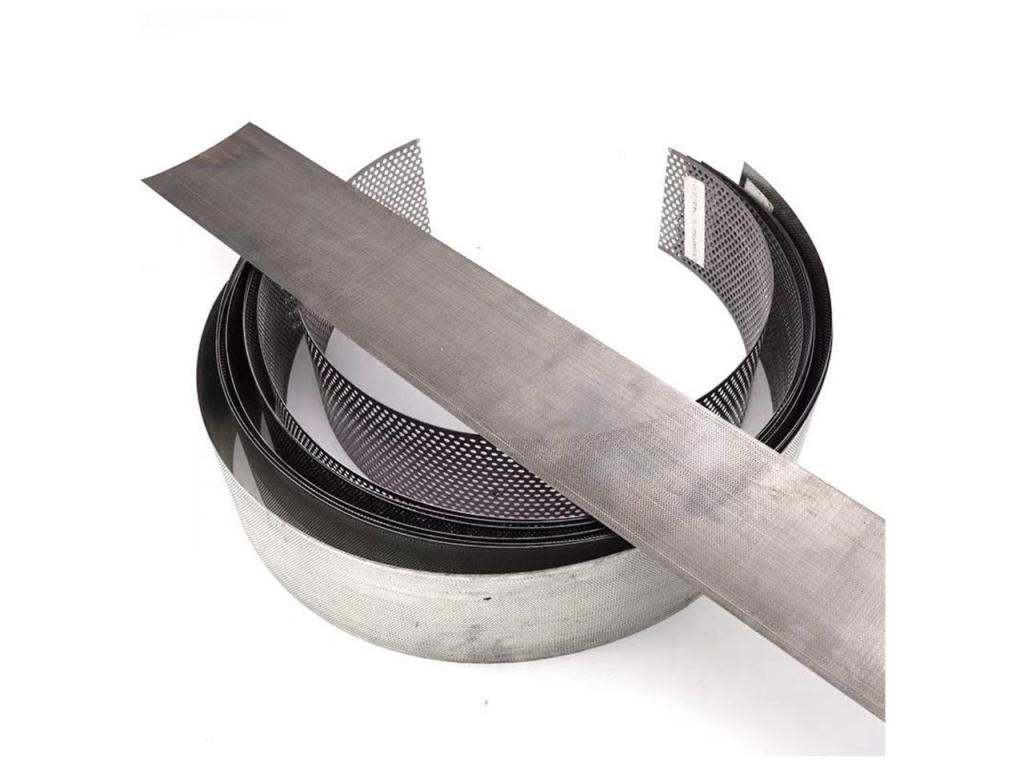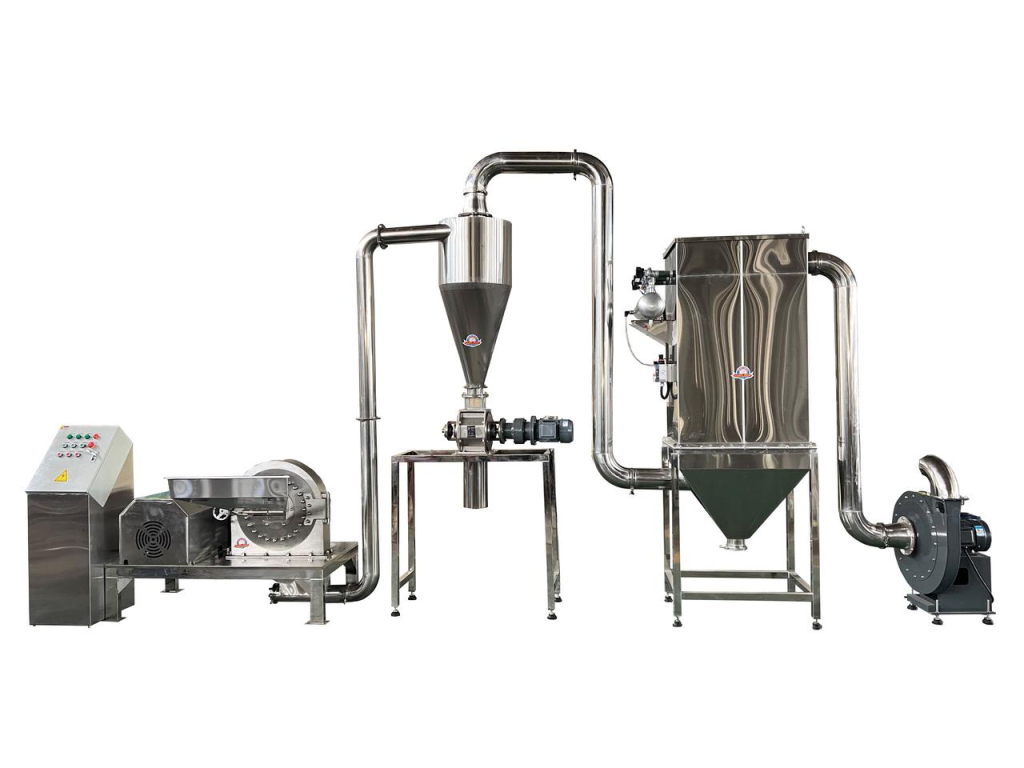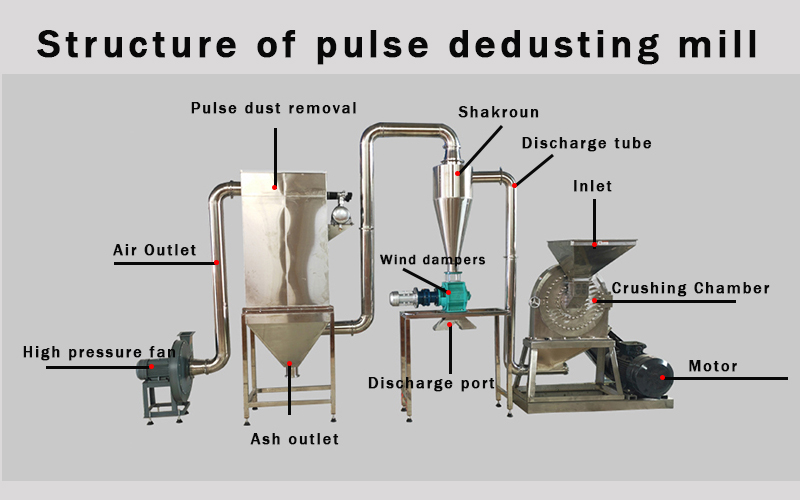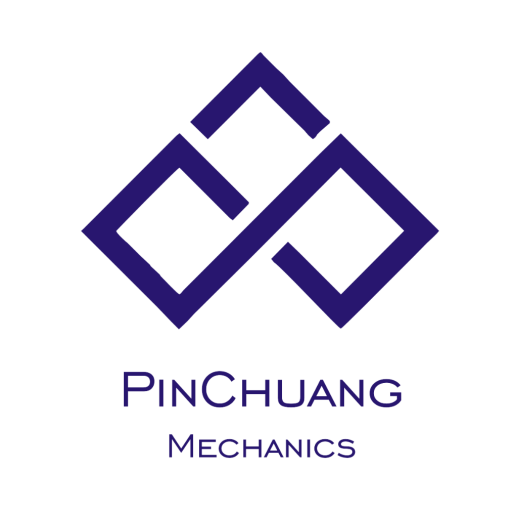Spice Grinder
What is a Spice Grinder?
A spice grinder is a professional grinding machine specially designed for spices such as Sichuan peppercorn, chili, star anise, cinnamon, cumin, and black pepper. Its core components include grinding discs, grading screens, a sealed feeding system, and a pulse dust removal device.
During operation, the motor drives the grinding components at high speed. Spices enter through the sealed feed inlet and are finely ground in the grinding chamber under the combined action of disc shearing, impact, and material-to-material friction. After grinding, the material passes through the grading screen: qualified particles are discharged via the sealed outlet, while the pulse dust removal system simultaneously collects dust to ensure flavor retention and a dust-free environment.
Key Advantages
1. Precise Retention of Spice Flavor and Activity
Adopts low-temperature, low-speed grinding technology (with water-cooled jackets available in some models) to avoid the loss of volatile essential oils (such as limonene in Sichuan pepper and capsaicin in chili) caused by traditional high-temperature grinding, thus maximizing aroma and active compounds.

2. Fine and Uniform Particle Size Control
By changing different screen sizes (commonly 0.3 mm, 0.8 mm, 1.5 mm, 3 mm), it can achieve multiple levels of fineness — from coarse grinding (e.g., chili flakes) to micro powders (e.g., ground Sichuan pepper, cumin powder). The finished product achieves over 95% particle uniformity.

3. Food-Grade Materials, Safe and Compliant
All parts in contact with the material (grinding chamber, grinding discs, screens, feeding/discharge pipes) are made of 304 or 316 stainless steel, which is resistant to acid and alkali, corrosion-proof, easy to clean, and odor-free.
4. Easy Operation, Low Maintenance
Wear parts (such as grinding discs and screens) adopt a modular design, fixed with buckles or bolts, allowing disassembly and replacement in just 5–10 minutes. Spare parts are highly interchangeable.

Application Fields
1. Seasoning Manufacturing
- Use Cases: Grinding Sichuan pepper, chili, star anise, cinnamon, etc. for hot pot base, barbecue seasoning, and Chinese compound seasonings (e.g., thirteen-spice, five-spice powder). Grinding pepper, cumin, rosemary, etc. for Western-style seasonings. Mixing spices with salt and sugar to prepare instant seasoning sachets.
- Advantages: Anti-cross-contamination design enables multiple spices to be processed without flavor mixing. Low-temperature grinding ensures rich aroma retention. Suitable for both large-scale mass production (output up to 500–2000 kg/h) and small-batch customized production.
2. Food Processing Industry
- Use Cases: In meat processing (e.g., sausages, cured meats, braised products), ground spices are blended with raw ingredients to enhance flavor. In baking, cinnamon, clove, nutmeg, etc. are ground and added to bread, cakes, and cookies. In instant foods (e.g., noodle seasoning packets, self-heating hotpot), fine spice powders are prepared for flavoring.
- Advantages: Food-grade materials prevent contamination, sealed systems protect spices from moisture and spoilage, and the machine supports continuous and standardized food production.
3. Catering and Household Use
- Use Cases: Small to medium-sized restaurants and hot pot shops can use compact tabletop spice grinders to freshly grind spices daily, ensuring enhanced freshness. Home users can choose mini models (about the size of a rice cooker) to grind small amounts of Sichuan pepper, black pepper, cumin, etc., improving home-cooked meals.
** Advantages: Compact machines are simple to operate, space-saving, low-noise, suitable for indoor use, and easy to clean with one-click disassembly for direct rinsing.





